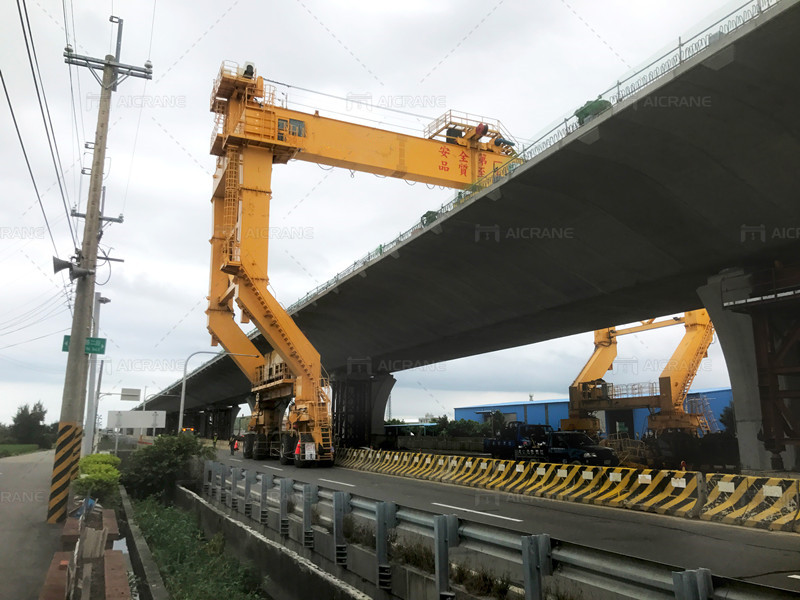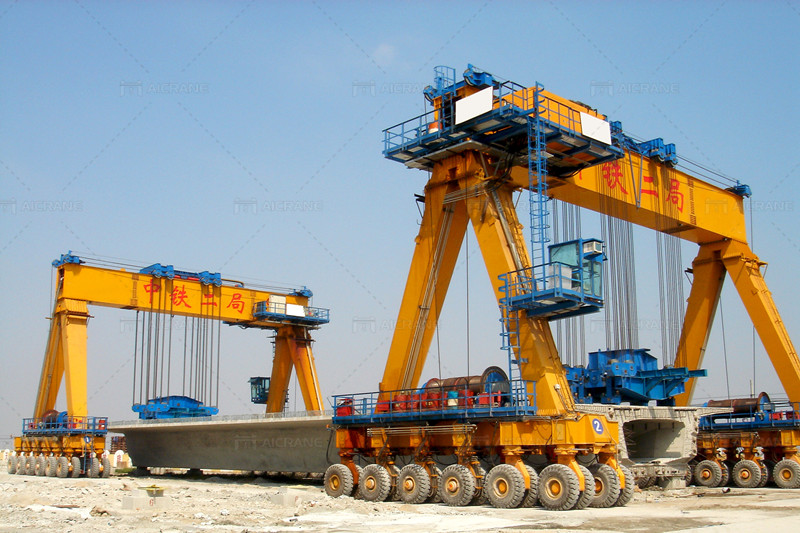The straddle carrier crane, a versatile and robust material handling equipment, plays a pivotal role in container terminals and industrial settings. These giants of the logistics landscape are responsible for lifting and transporting heavy containers with precision and efficiency. However, ensuring the safe transportation of straddle carrier cranes is a complex undertaking that demands careful planning, adherence to safety protocols, and meticulous execution. In this comprehensive guide, we explore five key points that are critical for the secure transportation of straddle carrier cranes, safeguarding both the equipment and the surrounding environment.

Thorough Pre-Transport Inspection
Before embarking on the transportation of a straddle carrier crane, a thorough pre-transport inspection is paramount. This inspection should cover all critical components of the straddle carrier, including the structural integrity, lifting mechanisms, electrical systems, and safety features. The goal is to identify any potential issues that could compromise the safety of the crane during transportation.
Inspectors should pay particular attention to components such as the spreader, cables, and lifting hooks, ensuring that they are free from damage, wear, or corrosion. Hydraulic systems, which play a crucial role in the operation of straddle carrier cranes, must be examined for leaks or malfunctions. In addition, all safety features, including emergency stop mechanisms and load limiters, should be tested to guarantee they are fully operational.
Documentation related to the crane, including manuals and maintenance records, should be reviewed to ensure that the crane has undergone regular servicing and that all necessary repairs or replacements have been conducted. A comprehensive pre-transport inspection establishes the foundation for a safe journey, preventing potential issues from escalating during transportation.
Securement and Load Distribution
Proper securement and load distribution are pivotal factors in ensuring the stability and safety of straddle carrier cranes during transportation. Securement measures involve the use of specialized equipment such as chains, straps, and braces to immobilize the crane and prevent movement during transit. It is crucial to adhere to the manufacturer’s guidelines and industry standards for securement to avoid any shifting or tilting of the gantry crane on the transport vehicle.
Equally important is the consideration of load distribution to maintain balance and stability. Straddle carrier cranes have a unique design, with a spreader that extends beyond the width of the crane. During transportation, this spreader should be properly secured, and the weight distribution on the transport vehicle should be carefully managed to prevent overloading or uneven weight distribution.
Transportation professionals should collaborate closely with straddle carrier manufacturers to develop a securement and load distribution plan tailored to the specific dimensions and weight distribution characteristics of the crane. Rigorous adherence to these plans minimizes the risk of accidents, including tipping or shifting of the crane during transit.
Compliance with Transport Regulations
The transportation of straddle carrier cranes is subject to a myriad of national and international regulations and standards. Compliance with these regulations is non-negotiable to ensure the safety of both the transportation crew and the public. Authorities such as the Department of Transportation (DOT) and the International Maritime Organization (IMO) have established guidelines for the transportation of oversized and heavy cargo, including straddle carrier cranes.
Transportation professionals must obtain the necessary permits and approvals for oversized cargo transport, taking into account the dimensions, weight, and route of the journey. Escorts and warning vehicles may be required to accompany the transport convoy, providing advance notice to other road users and assisting with the safe passage of the straddle carrier crane.
Additionally, adherence to height restrictions, weight limits, and travel schedules is critical. Oversized cargo transportation often requires meticulous planning to navigate through bridges, tunnels, and overpasses safely. Failure to comply with transport regulations can result in legal repercussions, delays, and, most importantly, jeopardize the safety of the transportation process.

Specialized Transport Equipment
The safe transportation of straddle carrier cranes necessitates the use of specialized transport equipment designed to handle heavy and oversized loads. Flatbed trailers with extendable or modular configurations are commonly employed to accommodate the unique dimensions of straddle carrier cranes. The trailers must be equipped with sturdy and adjustable support structures to ensure proper weight distribution and securement.
In addition to the trailers, specialized vehicles such as low loaders and heavy-duty trucks may be used to transport straddle carrier cranes over long distances. The selection of the appropriate transport equipment depends on factors such as the crane’s weight, dimensions, and the characteristics of the transportation route.
Transportation professionals should collaborate with experienced heavy haulage companies that specialize in oversized cargo transport. These companies possess the expertise and equipment required to safely and efficiently transport straddle carrier cranes, minimizing the risk of accidents and ensuring the integrity of the equipment upon arrival at its destination.
Communication and Coordination
Effective communication and coordination are the cornerstones of a safe straddle carrier crane transportation process. A multidisciplinary approach involving transport professionals, crane operators, escort vehicles, and relevant authorities is essential to orchestrate a seamless and secure journey.
Clear communication channels must be established among all stakeholders, and detailed transportation plans should be shared and reviewed by each party involved. Regular briefings and updates ensure that everyone is informed about the progress of the transportation and can respond promptly to any unforeseen challenges.
Coordination extends beyond the transportation crew to include collaboration with local authorities, law enforcement, and traffic management agencies. Road closures, detours, and other necessary arrangements should be communicated well in advance to minimize disruptions and enhance safety.
Furthermore, communication with the straddle carrier operators is critical during loading and unloading procedures. A well-coordinated effort between the transport crew and the crane operators ensures that the straddle carrier is safely positioned on and off the transport vehicle, mitigating the risk of accidents or damage during these crucial phases.
The safe transportation of straddle carrier cranes is a multifaceted endeavor that demands meticulous planning, adherence to safety protocols, and effective communication. By conducting thorough pre-transport inspections, ensuring proper securement and load distribution, complying with transport regulations, utilizing specialized transport equipment, and fostering clear communication and coordination, transportation professionals can navigate the complexities of oversized cargo transport with confidence. Safeguarding both the straddle carrier crane and the surrounding environment, these key points pave the way for secure and efficient transportation in the dynamic landscape of container terminals and industrial settings.